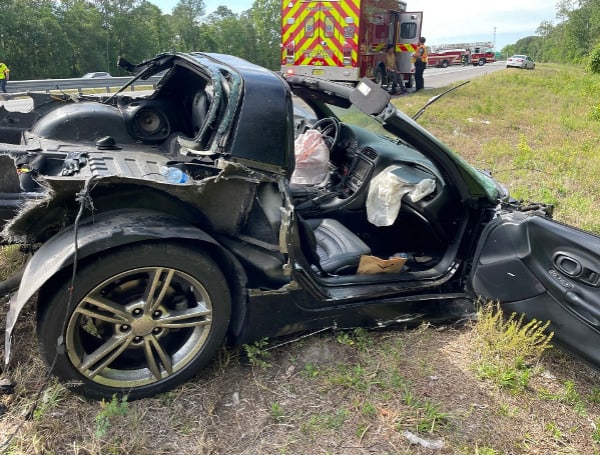
Memorial Day marks the unofficial start of summer and a dangerous time of year for teen drivers. Nationwide, more than 30 percent of deaths involving teen drivers occur during what’s called the “100 Deadliest Days” – a period that runs from Memorial Day to Labor Day.
“Summer is historically a dangerous time for teen drivers,” said Mark Jenkins, spokesman, AAA – The Auto Club Group. “Now that school is out, teens will spend more time on the road, often driving with friends at odd hours of the day and night. Because of their inexperience, teens are more susceptible to dangerous driving behaviors – like speeding, driving distracted, and not wearing a safety belt. AAA urges parents to model safe driving behavior and reinforce safe driving habits with their teen drivers to help keep them safe this summer.”
In the news: 2 Spring Hill Teens Airlifted After Corvette Crash On I-75 In Pasco County
Traffic crashes are the leading cause of death for teens ages 16-19. For every mile driven, new teen drivers (ages 16 – 17) are three times more likely to be involved in a deadly crash compared to adults.
National Teen Driver Statistics:
- An average of 2,108 teens are involved in deadly crashes, every year.
- 660 (31%) of those occur during the 100 Deadliest Days.
- These crashes result in an average of 2,341 deaths per year.
- 732 of those fatalities occur during the 100 Deadliest Days.
Florida Teen Driver Statistics:
- On average, 153 teen drivers are involved in fatal crashes, each year.
- 40 (26%) of those occur during the 100 Deadliest Days.
- These crashes result in an average of 169 deaths per year.
- 44 (26%) of those fatalities occur during the 100 Deadliest Days.
Common Risk Factors for Teen Drivers
Understanding the risks and knowing the facts will prepare both you and your teen for the road ahead:
- Distracted driving. Distraction plays a role in nearly six out of ten teen crashes. Electronics like cell phones and in-vehicle infotainment systems are considered the second-biggest distraction to teen drivers. The biggest distractions are teen passengers.
- Driving with teen passengers. Research shows that the risk of a fatal crash increases in direct relation to the number of teenagers in a car (NHTSA). Having other passengers in the car can contribute to peer pressure and the impulse to engage in dangerous habits like speeding and aggressive driving.
- Speeding. Speeding is a factor in nearly 30 percent of fatal crashes involving teen drivers.
- Not wearing a safety belt. Teens who buckle up significantly reduce their risk of dying or being seriously injured in a crash.
In the news: 2 Juveniles Killed After Crash In Tampa
AAA’s Advice for Parents
“The single most important thing parents can do to help their teens become safe drivers is to be involved in their ‘learning to drive’ process,” said Rachel Wilson, Director of Driver Education Programs, AAA – The Auto Club Group. “Spend time coaching your teen while they’re behind the wheel and have a serious discussion about safety. While parents can be a great teacher, it also helps to seek out professional training courses, like those provided by AAA.”
- Lead by example. Minimize risky behavior when you drive. Don’t drive aggressively, avoid distractions, and always wear your seatbelt. Your driving skills and judgement behind the wheel shape your child’s view of safe driving habits, even before they’re old enough to drive. Make safe driving a priority in your own life.
- Conduct at least 50 hours of supervised practice driving. Let your teen drive in a variety of conditions including inclement weather, busy interstates, and at night. This will help them become a more confident driver in imperfect situations.
- Teach defensive driving skills. Help your teen anticipate potential risks by constantly scanning the road for hazards. Then share advice for how to safely avoid them.
- Establish a parent-teen driving agreement which sets family rules like when the teen can drive, where they can go and with who. Then clearly outline the consequences for breaking the rules and rewards for driving safe.
Behind the Wheel Driving Courses
The AAA Approved Driving School Network helps identify the best driver training resources in your local community. These schools have passed AAA’s stringent standards and offer quality curriculum as well as the best value for students.
To learn more, visit AAA.com/Drive contact DriverTraining2@acg.aaa.com or call (888) 222-7108.
Android Users, Click To Download The Free Press App And Never Miss A Story. Follow Us On Facebook and Twitter. Signup for our free newsletter.
We can’t do this without your help; visit our GiveSendGo page and donate any dollar amount; every penny helps.
